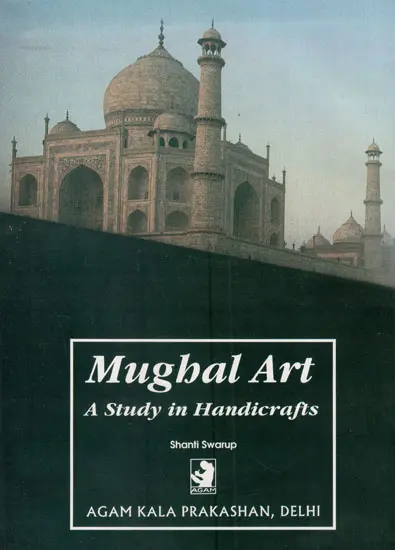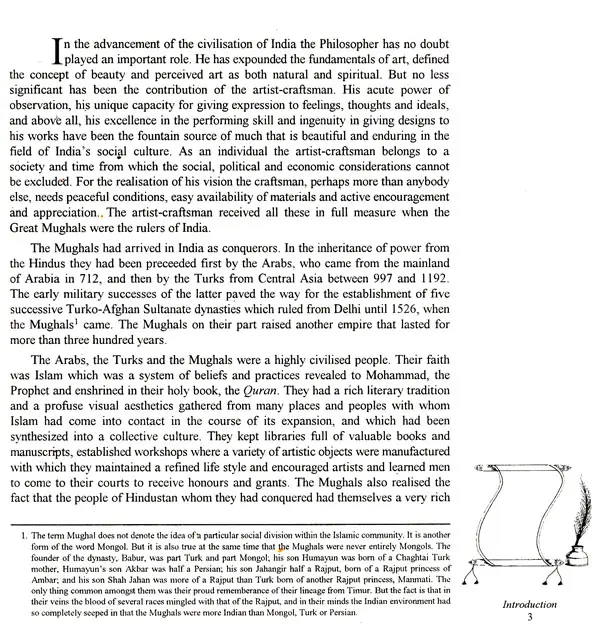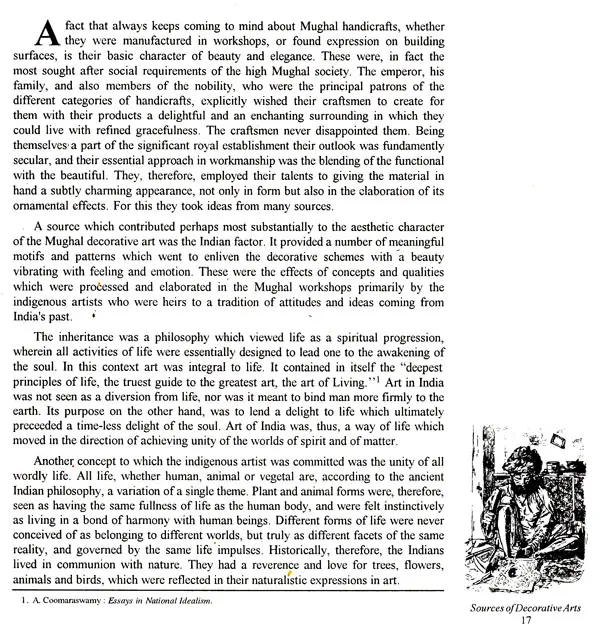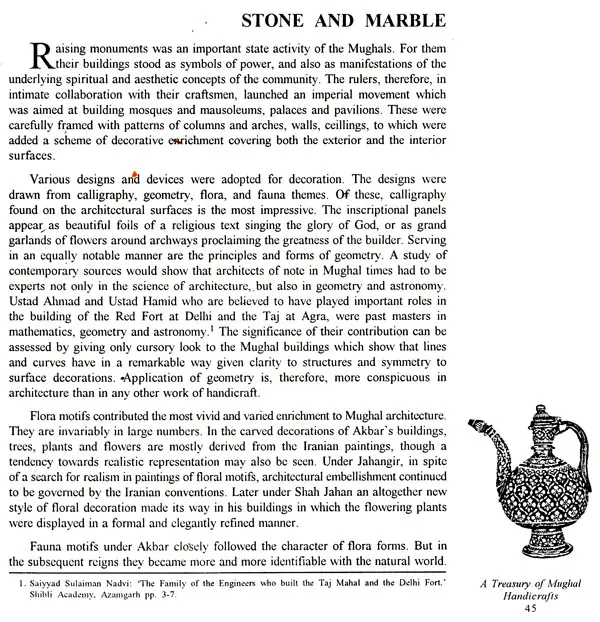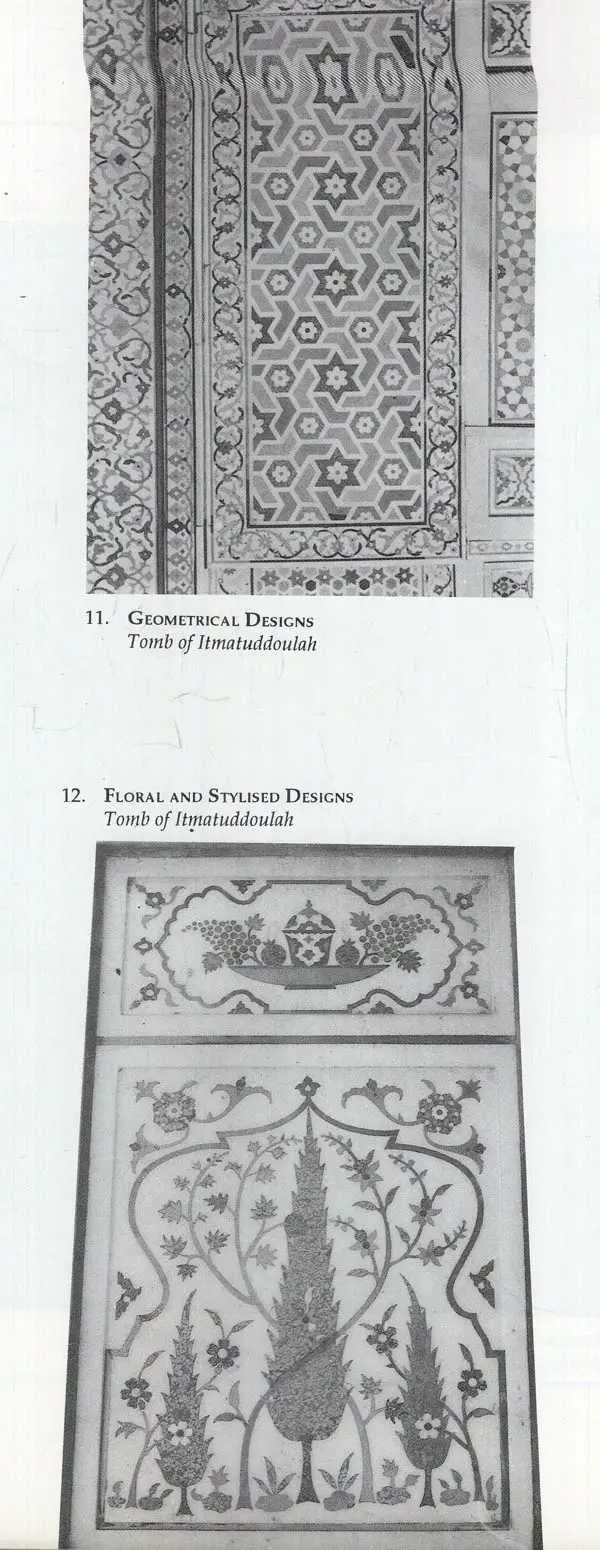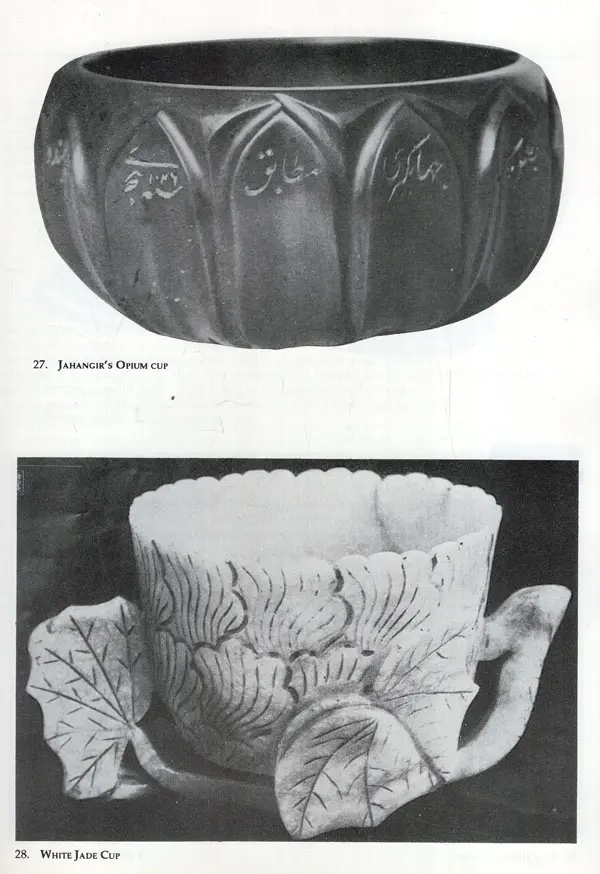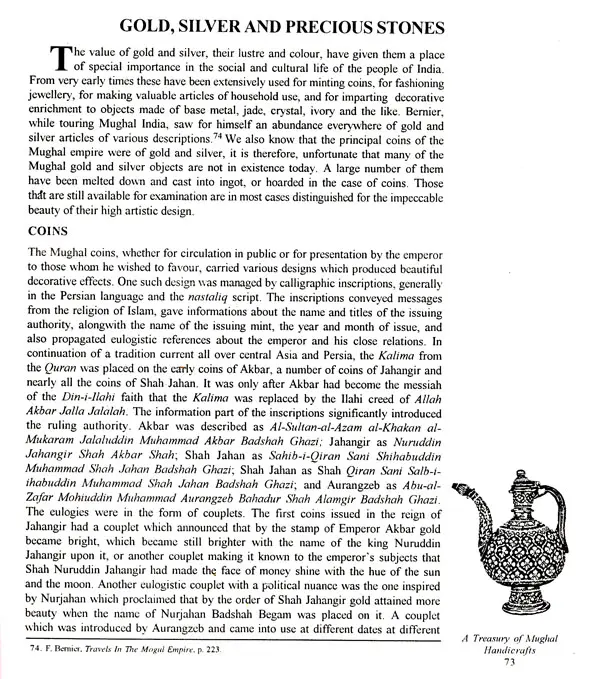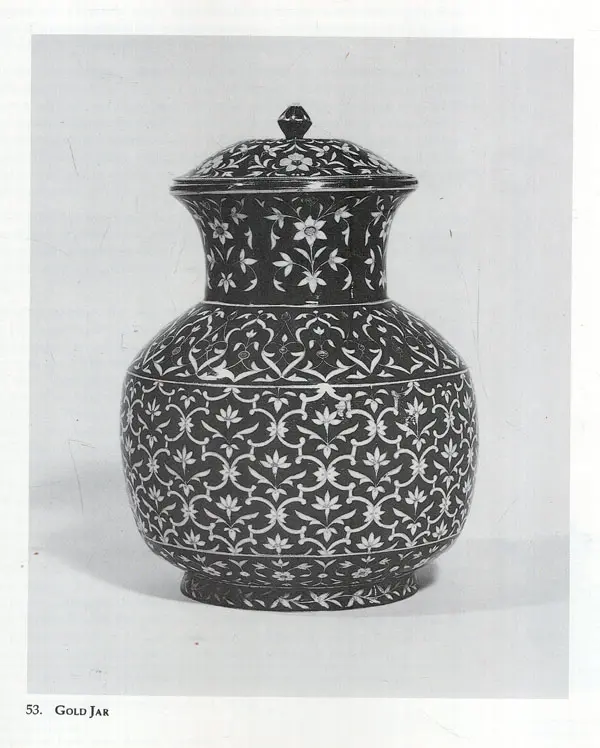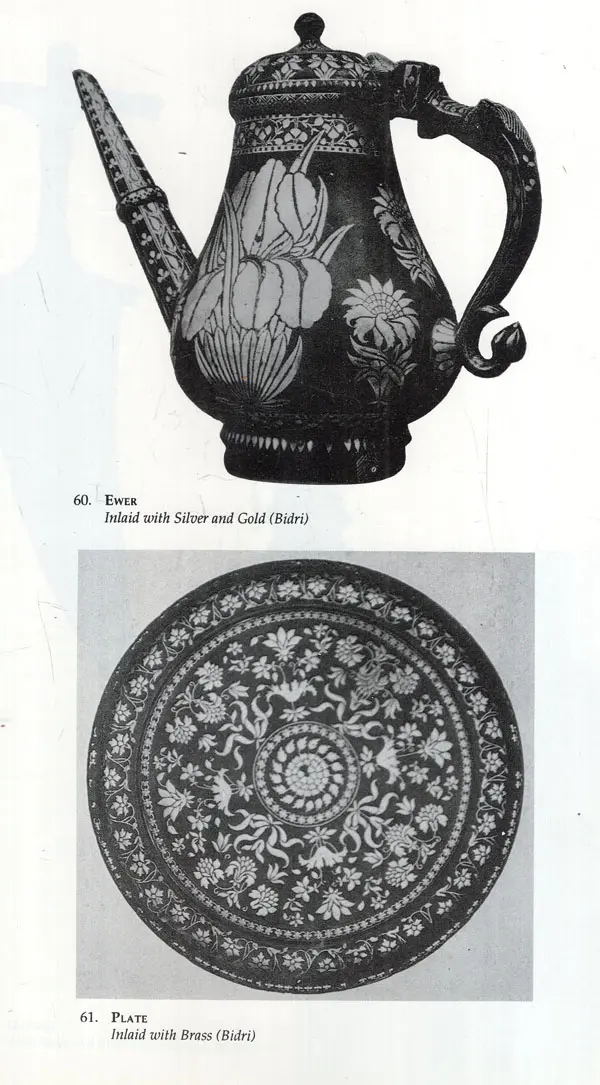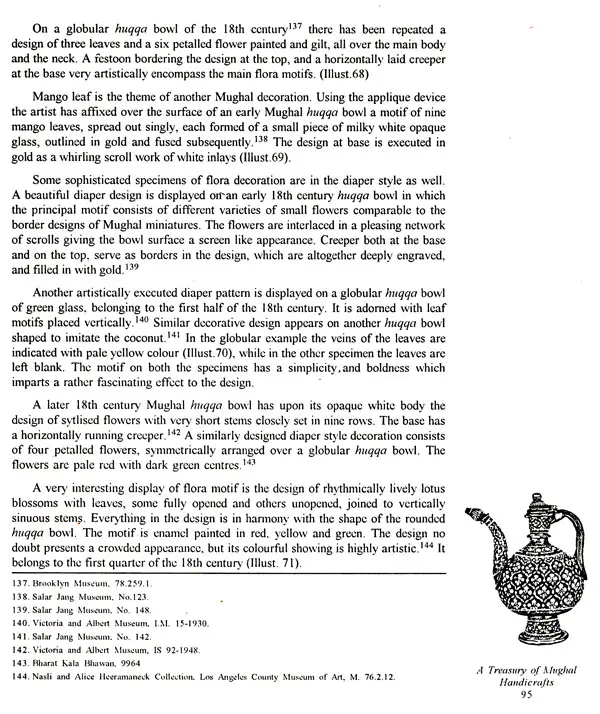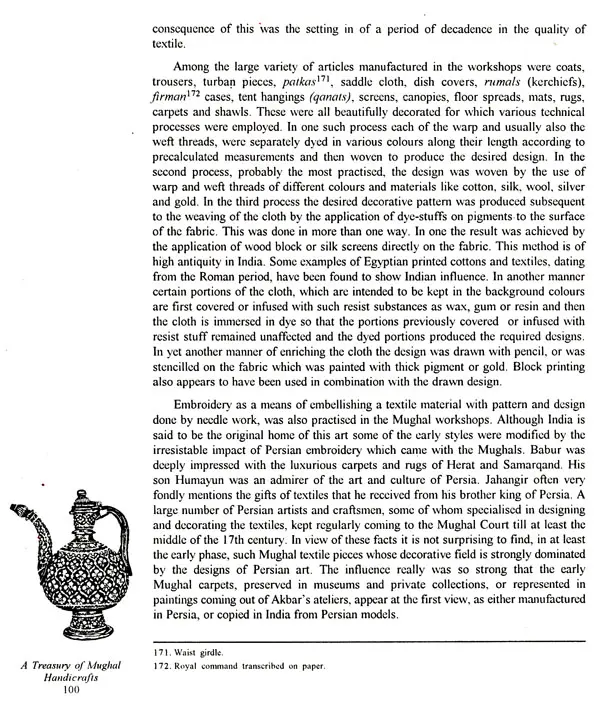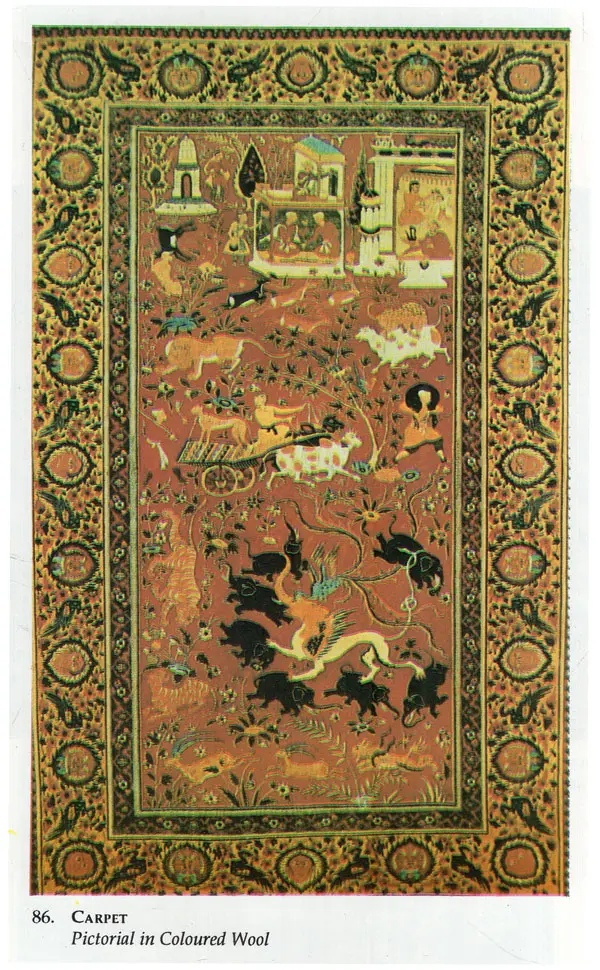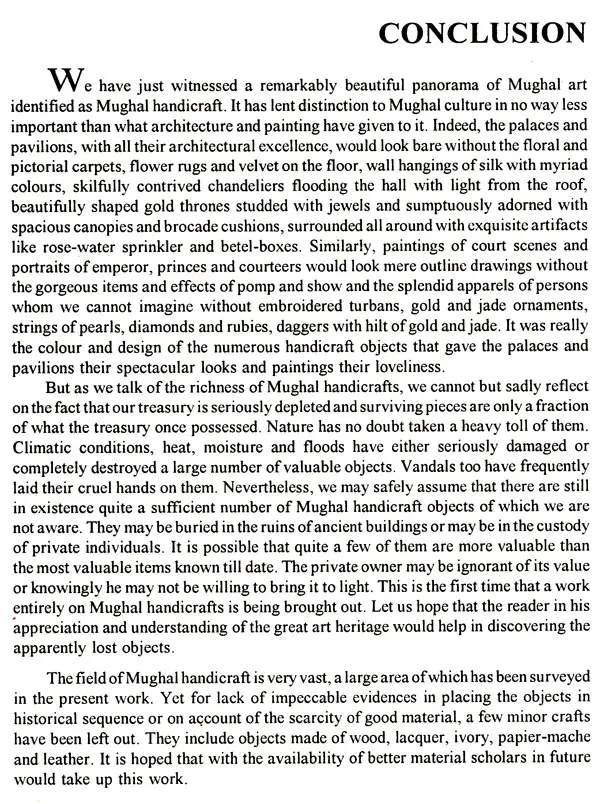
Mughal Art: A Study in Handicrafts
Book Specification
| Item Code: | UAO703 |
| Author: | Shanti Swarup |
| Publisher: | Agam Kala Prakashan, Delhi |
| Language: | English |
| Edition: | 1996 |
| ISBN: | 8173200262 |
| Pages: | 135 |
| Cover: | HARDCOVER |
| Other Details | 11.00 X 9.00 inch |
| Weight | 1.12 kg |
Book Description
In view of the growing interest in Indian handicrafts in modern times an appreciation of Mughal handicraft gets a renewed validity. It, therefore, becomes our duty to study, understand and preserve what remains of this great treasury. The present work is an attempt to fill the vacuum in this field. It is for the firsttime thatabook on Mughal Handicraft is being brought out, and superbly so After a general discussion on the social political and economic conditions of Mughal India the author goes on to expound the sources of Mughal decorative arts and the designs of decoration and finally describes the various forms of Mughal handicrafts illustrating them with found on archaeological sites in India and select objects preserved in museums and private collection all over the world-all this in fascinating details.
While working on the project he went to England as a Visiting Scholar on the invitation of the British Council to study Mughal Handicraft in the museums in U.K. His major published works include Arts and Crafts of India and Pakistan, 5000 Years of Arts and Crafts of India and Pakistan and Flora and Fauna in Mughal Art.
The present work is based on the final report of a research project entitled "Decorative designs in Mughal Handicrafts sponsored by the Indian Council of Historical Research. The British Council also took interest in the project and provided facilities to the author to study Mughal handicrafts in the museums of the United Kingdom, chiefly in the Victoria and Albert Museum which has its largest and richest collection in the world. As the work deals mainly with the decorative aspects of the Mughal handicrafts, an attempt has been made to trace the sources of ornamentation, analyse their different designs in an evolutionary process, and study the select pieces in the fields of stone and marble, jade, crystal and agate, gold, silver and precious stones, base metal, glass and textiles.
**Contents and Sample Pages**
